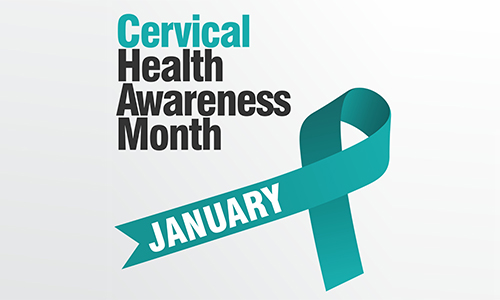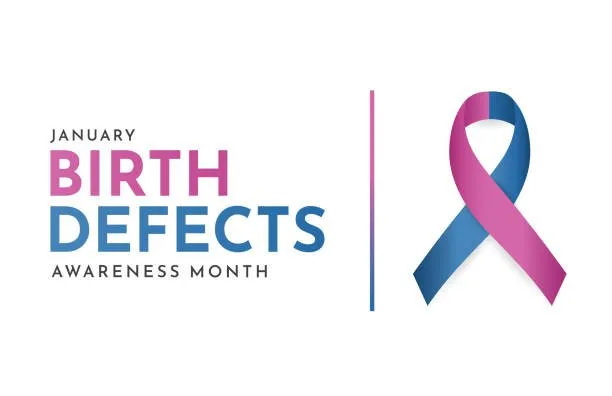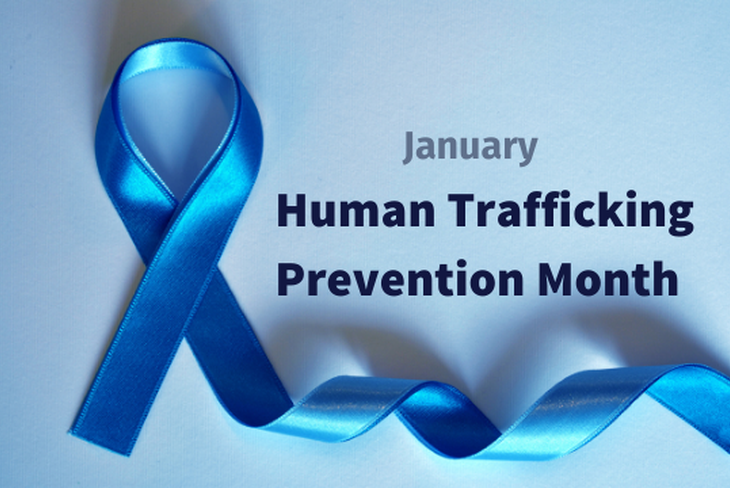Social Share
PART I.
NATIONAL HEALTH OBSERVANCES FOR JANUARY 2024
A. THYROID AWARENESS MONTH

American Thyroid Association-https://www.thyroid.org.
Source: Advanced Community Health https:// advancechc.org/thyroid
FACTS:
More than 1200 of the U.S. population will develop a thyroid condition during their lifetime. Women are5-8 time more likely to have a thyroid problem; most thyroid cancer responds to the prescribed treatment; undiagnosed thyroid disease may lead to cardiovascular diseases, osteoporosis and infertility; pregnant women with undiagnosed or inadequately treated hypothyroidism have increased risk of miscarriage, preterm delivery or severe developmental problems in their children; most thyroid diseases are life-long and can be managed with medicine. “
“The thyroid influences the cells, tissues organs, regulates processes of metabolism, heart function, body temperature, digestion, skin and bone maintenance, brain development and muscle function.
The main thyroid disorders include:
- 1. Hypothyroidism-which leads to slowed
- 2. Hyperthyroidism which leads to an increase of the body’s metabolism.
- 3. Goiter is an enlarged thyroid and is not a disorder. It indicates inadequate iodine in the diet or poor thyroid function. Some patients have no identified cause. It affects about 5% IN U.S.
- 4. Cancer is uncontrolled multiplication of cells. Each year 45,000 people, 12,000 men and 33,000 women in the U.S. are diagnosed. Most are successfully treated, about 2050 people die each year.
It is estimated that over 20 million people in U. S. are living with thyroid disease and more than half don’t know it. Most symptoms are wide-ranging, not specific and happen gradually.
Some of the symptoms include-
- 1. Changes in energy levels (tiredness, restlessness and drowsiness).
- 2. Changes in mood and mental health (anxiety, depression& difficulty in concentrating)
- 3. Unexpected weight changes
- 4. Digestion problems (frequent stool or constipation lasting for weeks)
- 5. Menstrual cycle changes (amount & timing)
- 6. More temperature sensitivity (too cold or too hot)
- 7. Skin, hair and nail changes (dry skin, brittle nails, hair falling out).
Promote Thyroid Health:
- 1. Eat a balanced healthy diet, rich in iodine (fish shrimp, dairy, fortified salt)
- 2. Perform thyroid self-check-drink a glass of water in front of a mirror, watch for swelling or bulging in neck
- 3. If symptoms are noticed can only check with blood test
- 4. If concerned, see Dr. and share symptoms, medical and dietary history.
“Resource of General Information from the American Thyroid Association.”
B. National Glaucoma Awareness Month.
https://glaucoma.org/
Source: Glaucoma Research Foundation.

FACTS:
“More than 3 million people in the U.S. have glaucoma. The National Eye Institute projects that this number will reach 4.2 million by 2030, a 58% increase. Glaucoma is called the sneak thief of sight. Since there are no symptoms and once vision is lost, it’s permanent. As much as 40% of vision can be lost without a person noticing. Glaucoma is the leading cause of irreversible blindness. The condition is more prevalent among African American and Latino populations. It is 6-8 times more common in African Americans than Caucasians. It is important to have regular eye examinations to preserve vision. Help raise awareness-let family members know if you have it, don’t keep it a secret. The most common form primarily affects the middle-aged and the elderly. It can affect people of all ages. The two main types of glaucoma are marked by an increase of intraocular pressure.
The best way to protect your sight is to get a comprehensive eye exam. If diagnosed, treatment should begin immediately.
Risk Factors:
- 1. People of African, Asian and Hispanic descent
- 2. People over 60
- 3. Faily members of those already diagnosed
- 4. Patients with diabetes and people who are severely nearsighted.
Eye Examination: Your eye Dr. must check five factors-
- 1. Pressure inside eyes
- 2. Dilated eye exam
- 3. Measure field of vision
- 4. Check angle in the eye where the iris meets the cornea
- 5. Check the thickness of the cornea.
Free resource to help you stay informed, go to https://www.glaucoma.org/gleams/”
C. Cervical Health Awareness Month
https://www.nccc-online.org/
Source: National Cervical Cancer Coalition NCCC).

FACTS:
“ Cervical cancer is one of the most preventable cancers today. Women
- 1. should start screening with Pap test at age 21.
- 2. Starting at age 30, women have 3 options-Pap test alone every 3 years; Pap test and HPV every 5 years; HPV test alone every 5 years.
- 3. After age 65, if women have had adequate prior screening and otherwise not at high risk can stop screening
- 4. Women who had a hysterectomy (with removal of cervix) don’t need screening. Since 2018, HPV test is an option for primary cervical cancer screening.
Approximately, 14 million new cases of sexually transmitted Human papilloma virus (HPV) will occur each year with at least 79 million people estimated to be currently infected. Most people with HPV do not know that they are infected. Fortunately, 80%-90% of cases of HPV will be naturally eliminated.
- 1. HPV is spread through skin contact not through an exchange of bodily fluids
- 2. HPV can be contacted from one partner, remain dormant and later be transmitted to another sexual partner, including a spouse
- 3. The majority of women with HPV infection will not develop cervical cancer but regular screening is still important
- 4. Regular screening with Pap and HPV tests will detect most precancerous changes and cervical cancer
- Latex condom can reduce, but not totally eliminate the risk of HPV transmission
PART II.
HEALING AIDS FROM THE BALM IN GILEAD
Source:
Click on Education and Inspiration and find to topics-Sunday Morning Health Corner and Resources
Facts:
PART III.
CENTER FOR DISEASE CONTROL AND PREVENTION
A. National Birth Defects Awareness Month.

FACTS:
- 1. Plan ahead and see the Dr. regularly
- 2. Avoid harmful substances as-Alcohol which can cause miscarriage, stillbirth, physical, behavioral & intellectual disabilities; Cigarettes which can cause preterm birth, defects as cleft lip or cleft palate and infant death; stop smoking as early as possible and prevent health problems as low birth weight; Marijuana and other drugs cause health problems and birth defects.
- 3. Prevent infections, some can cause serious illness, birth defects and lifelong disabilities as hearing loss and learning problems; wash your hands with soap and water often before touching the baby and after touching any object
- 4. Read labels and only drink and eat food made with pasteurized milk;
- 5. Avoid people who are sick and have infection;
- 6. Ask Dr. about Group B Strep. About 1 in 4 women carry this type of bacteria but don’t feel sick.
- Adolescents and young adults living with birth defects may face unique challenges as they shift from pediatrics to adult care. Be prepared to continue the journey.”
B. National Human Trafficking Prevention Month

FACTS:
- 1. Domestic servitude, the victims work in a private residence and are hidden from the world (law enforcement and labor inspection) and often prevents victim identification
- 2. For Child labor and these victims are controlled by denial of food, rest or schooling
- 3. Sex trafficking, traffickers use force, fraud and coercion to compel the victim to engage in a commercial sex act. This can take place in a private home, hotel as well as on the internet. Traffickers can take victims miles away or exploit them in the same neighborhood where they were born.
- 4. The victims can be any age, race, ethnicity, sex, nationality, cultural background, religion, socio-economic class, education attainment, and gender orientation. Traffickers can be strangers and even family members.
- 5. In 2021, approximately 27.6 million people were in forced labor. Of these 17.3 million are exploited in the private sector